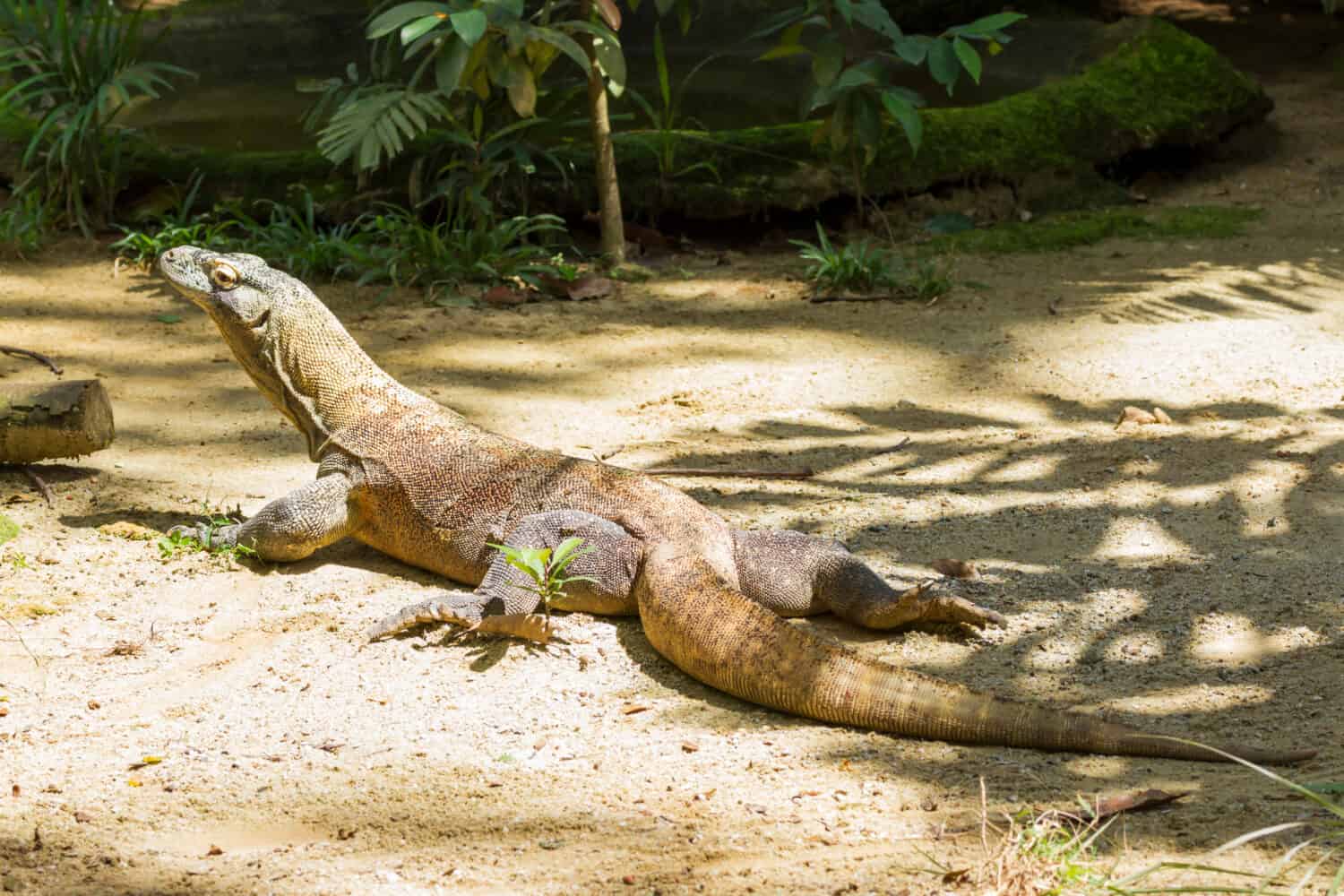Komodo Dragon Trapped in a Prison of Its Own Making!
In the remarkable video below, an adventurous Komodo dragon embarks on an extraordinary journey along the sandy shores.
Surprisingly, the reptile fearlessly puts its head inside a sea turtle shell, completely blocking its vision. Without any concern, the dragon leisurely walks along the beach, even though it can’t see!
This Magnificent Predator May Have Bitten Off More Than It Can Chew!
This intriguing scene showcases the dragon’s adaptability. Despite its temporary blindness, the dragon remains calm, showing no signs of distress. However, it may face a challenge when trying to remove its head from the shell after devouring the entire sea turtle.
Adding to the excitement, another Komodo dragon joins the first. The newcomer might be curious or hoping for an easy meal. Nevertheless, since Komodo dragons are known for their rivalry, this situation could become dangerous for the dragon with its head trapped.
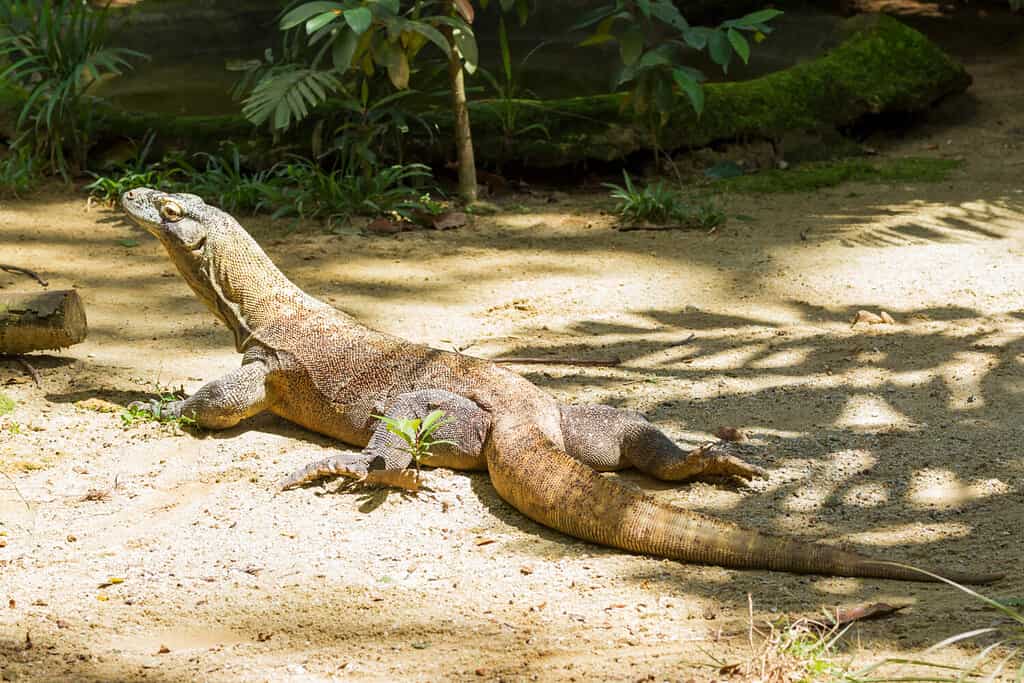
Komodo dragons are an endangered species that are constantly threatened by habitat destruction and the illegal exotic pet trade.
©Duc Huy Nguyen/Shutterstock.com
In the meantime, a murder of crows eagerly watches the unfolding drama, anticipating a small meal from the aftermath. But from who will this meal come from, the remains of the turtle? Or the Komodo dragon, should it not be able to free itself?
Witness this one-in-a-million video below to experience this incredible encounter between these amazing reptiles and their curious bird onlookers. This is truly something you must see to believe, even though this Komodo dragon can’t see anything!
Real Life Dragon Fights, This Isn’t an HBO Show!
Komodo dragons engage in fierce battles with each other for various reasons. These territorial creatures fiercely guard their hunting grounds and compete for limited resources such as food and mates. Male dragons clash over dominance and breeding rights, engaging in intense combat with biting, tail whipping, and body slams.
These fierce creatures visible in the video below have sharp teeth and strong jaws, which are capable of lethal damage. Komodo dragons can engage in fights that can sometimes result in the death of one of the individuals involved.
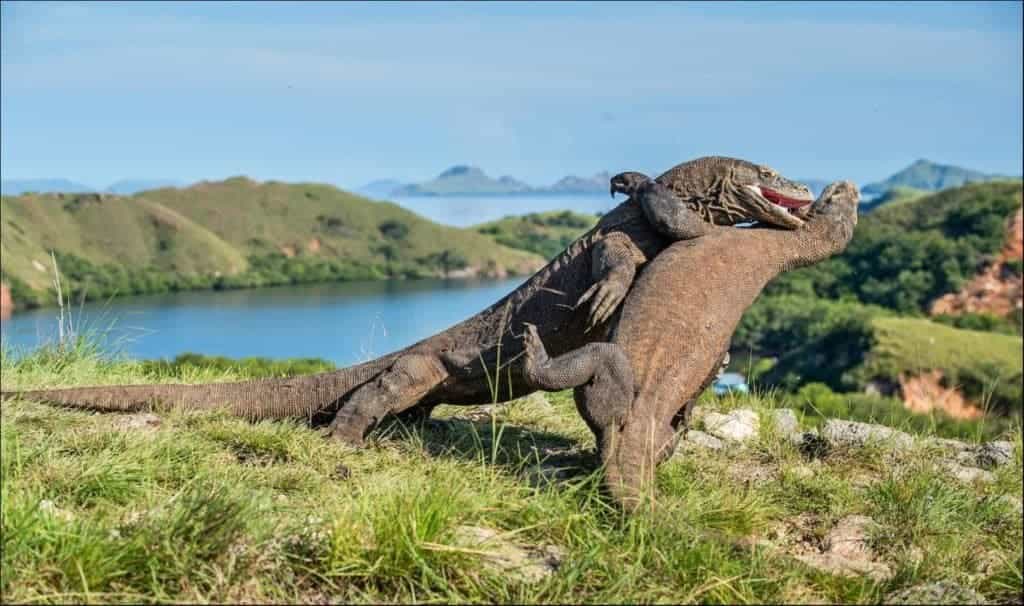
Two Komodo dragons face off, with the left dragon getting the upper hand at the moment the photo is taken.
©Sergey Uryadnikov/Shutterstock.com
These battles can occur between rival males competing for territory or mating rights. Their teeth, claws, and jaws are all used as weapons during these fights. While serious injuries and fatalities can occur, such fights are not a regular occurrence in their behavior and are more commonly observed during territorial disputes or mating competitions.
These fights determine the dominant male, securing his position and increasing his chances of mating. Komodo dragons also display aggression towards intruders encroaching on their territory, defending their territories and resources within their restricted habitat.
Thinking About How Cool It Would Be To Have a Pet Dragon? Think Again!
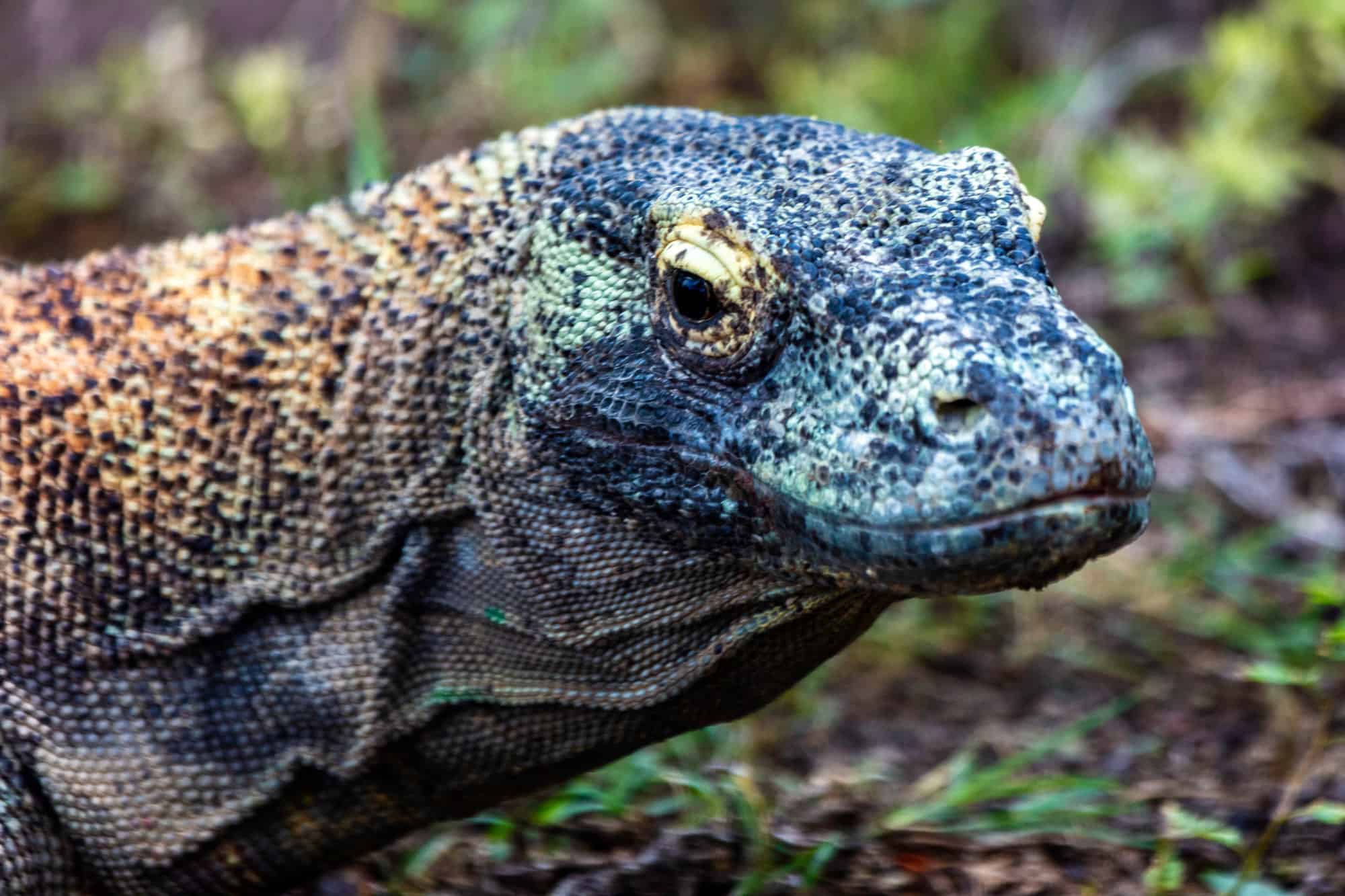
It is illegal and unethical to own a Komodo dragon as a pet in the U.S.
©iStock.com/desertsolitaire
Owning a Komodo dragon as a pet is not legal in the United States. These magnificent reptiles are protected by international regulations due to their endangered status. Federal laws, such as the Endangered Species Act, strictly prohibit the private ownership of Komodo dragons.
Furthermore, the Lacey Act prohibits the importation and interstate transport of these animals without proper permits. While certain states might allow ownership of exotic animals, such as reptiles, it is crucial to note that Komodo dragons are not exceptions.
Ethically, owning a Komodo dragon as a pet raises concerns about animal welfare, as these creatures have specific habitat requirements, complex social behaviors, and specialized dietary needs that are challenging to replicate in captivity.
Thus, it is essential to prioritize the conservation and protection of these remarkable animals in their natural habitats.
Is it Normal for Komodo Dragons to Eat Turtles?

Turtles are one of the many animals on the menu for the Komodo dragon.
©kiwisoul/ via Getty Images
Komodo dragons have flexible skulls, jaws that are loosely articulated, and stomachs that are able to expand. All of these features enable them to eat larger prey and they are known for their ability to eat large prey in one swallow. They are also known as opportunistic feeders and will eat whatever they find, which as the video below shows, happens to be a turtle.
Komodo dragons consume food by tearing off huge chunks of flesh while swallowing them whole and are able to swallow prey the size of goats. As eating turtles is not an easy task, these larger animals generally take them a bit longer to consume, and quite often they will use the support of a tree to help get the animal down their throats.
Due to the force used on the tree, they are quite often knocked down in the process.
How Large Are Adult Komodo Dragons?
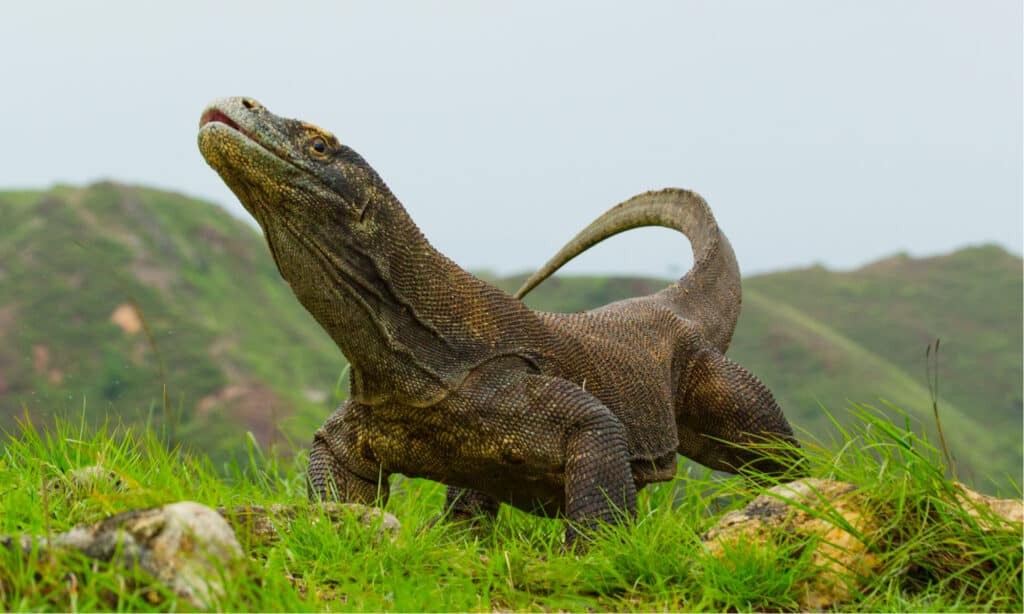
The largest Komodo dragon ever recorded was 10.3 feet and weighed 366 pounds.
©GUDKOV ANDREY/Shutterstock.com
With an average weight of around 154 pounds, the Komodo dragon is the largest and heaviest living lizard on the planet – although they can reach weights of over 300 pounds. Like many animals, the males tend to weigh more than the females and fully grown adults can reach 10 feet in length. The largest Komodo dragon ever recorded was 10.3 feet and weighed 366 pounds.
Thank you for reading! Have some feedback for us? Contact the AZ Animals editorial team.

